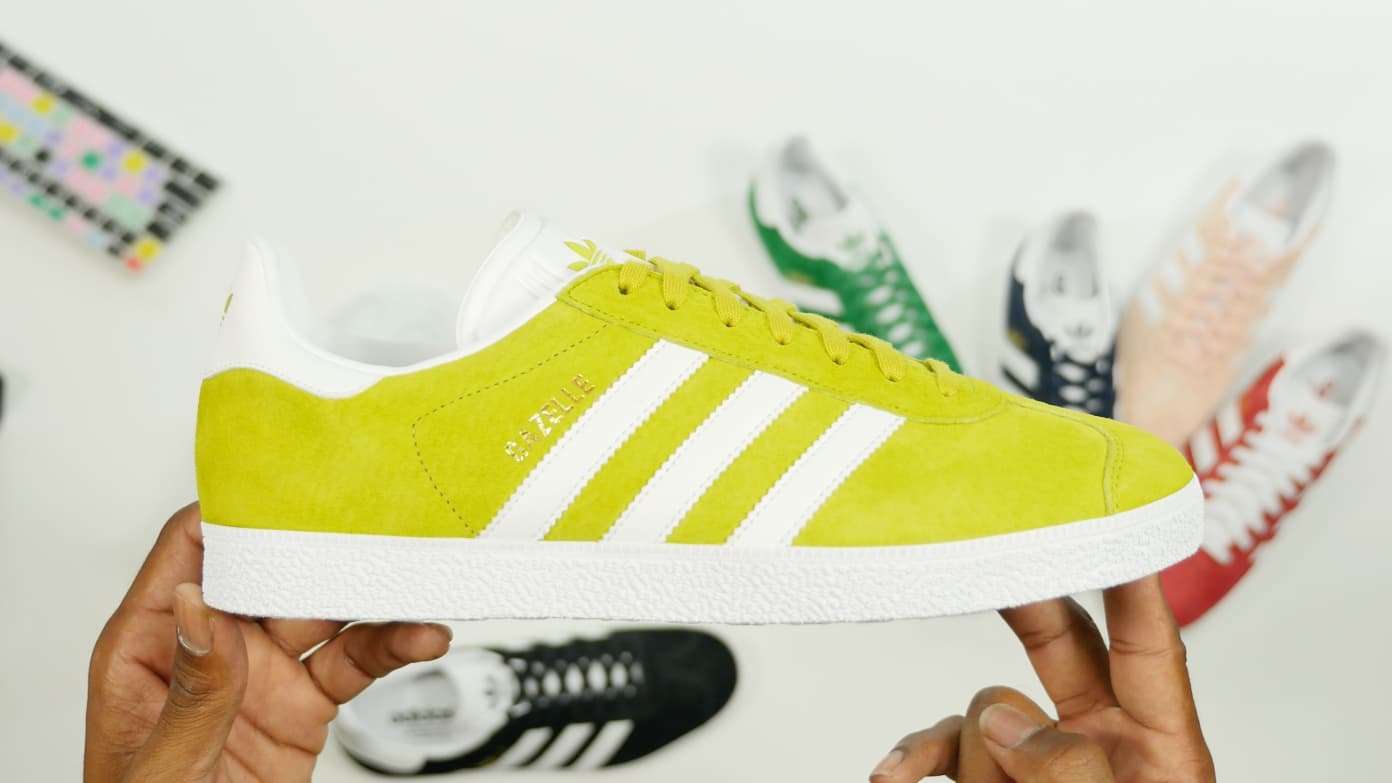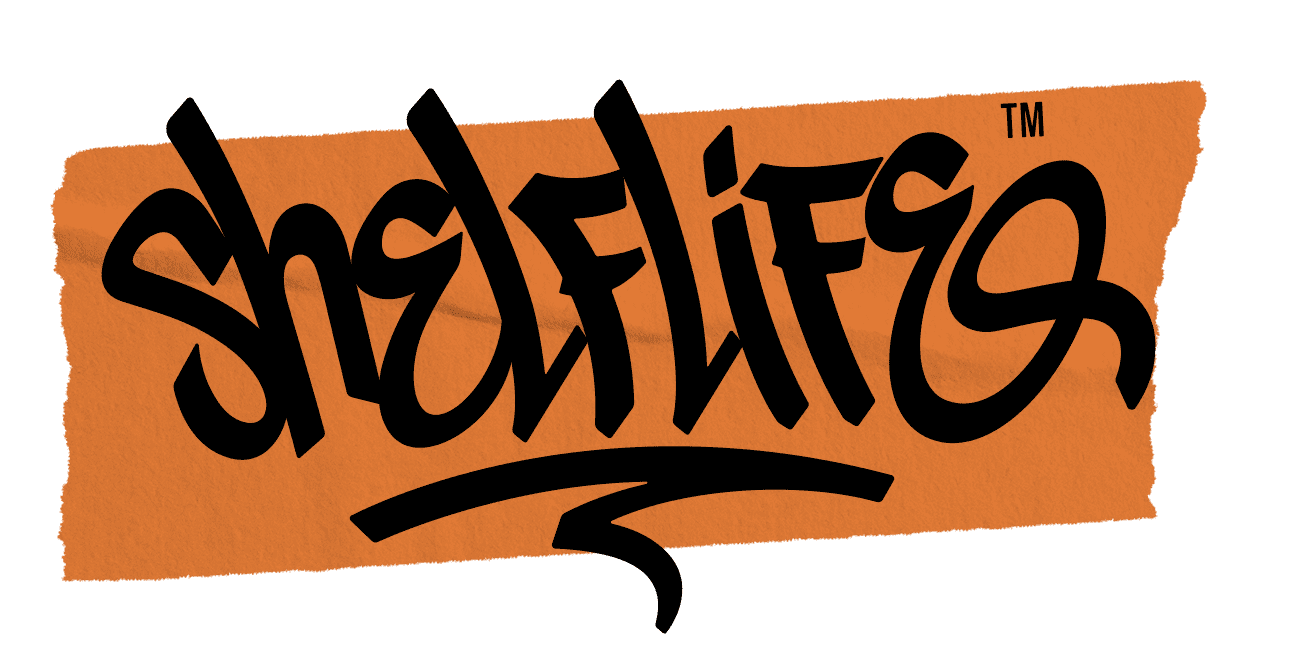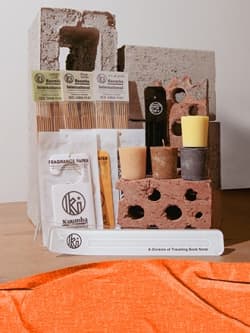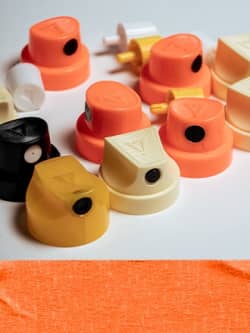#FactsFriday - Story of the Gazelle

The Gazelle is undeniably one of the most famous and iconic shoes ever produced by adidas and has a long history dating back to the middle of the 60s. Although the shoe may be viewed as relatively simplistic in a contemporary sense, its modest and clean looking silhouette has endeared it to its many fans ever since and ensured it has been in pretty much continuous production for over 50 years.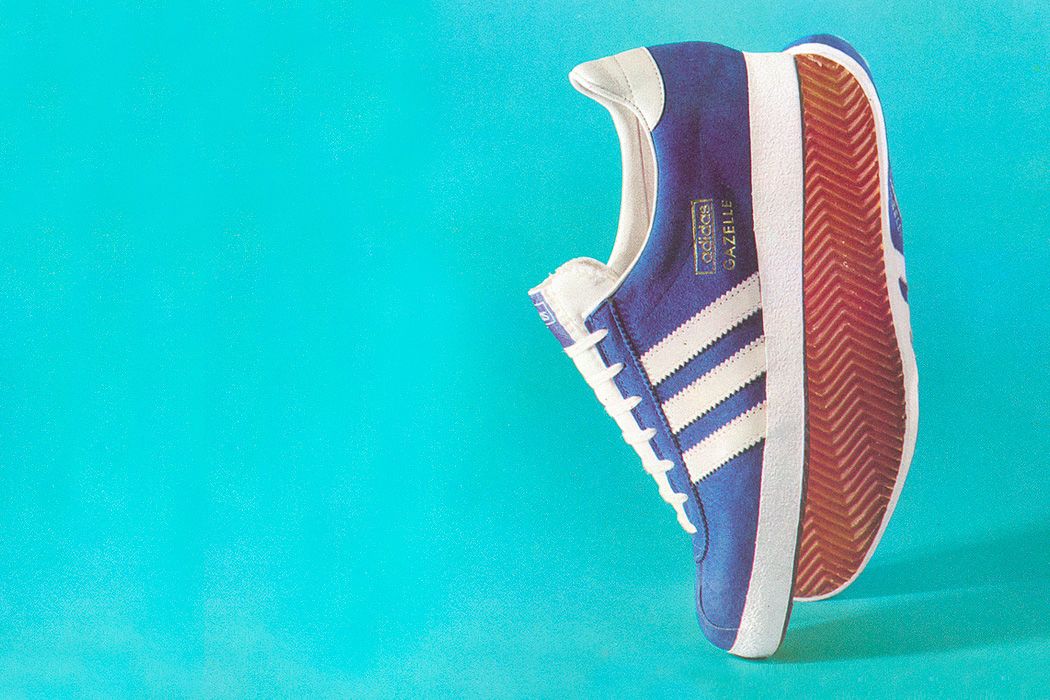
adidas is now pushing the classic low-top—thanks to a ton of new iterations of the shoe—as the next retro phenomenon to follow up the classic Stan Smith. The Gazelle is a shoe that started off in the sports world, has been worn by a handful of influential subcultures, and was favoured by celebrities such as Oasis, Kate Moss, and even a young Michael Jackson.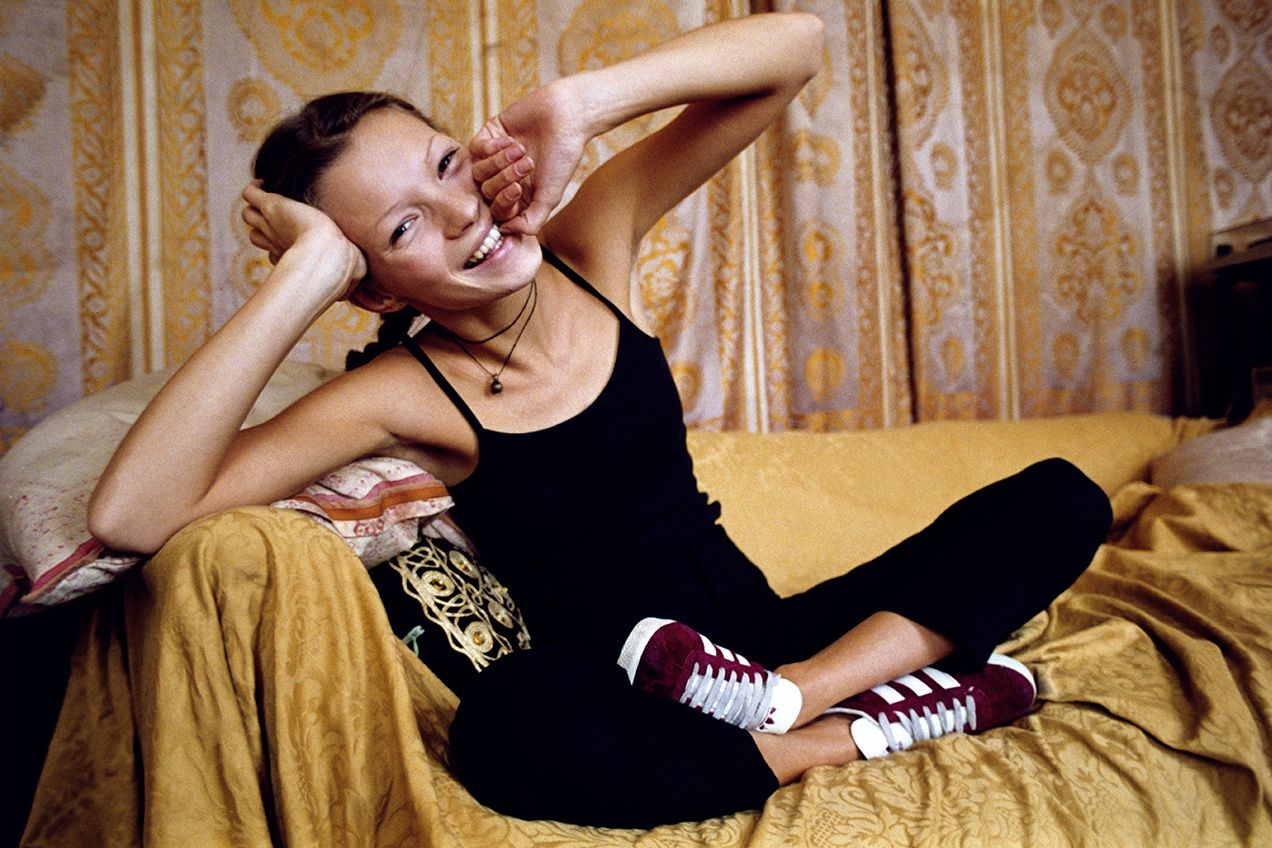
adidas is a brand rooted in Adi and son Horst Dassler’s absolute obsession with performance, and shoes that were frequently updated. Due to licensing deals across the world, there’s no single “true” incarnation of the Gazelle. adidas had training designs that paved the way for the Gazelle. 1960’s Rom was a leather shoe with a ripple sole and suede toe overlay that was timed for the Rome Olympics that year and 1964’s Olympiad was a German team favourite, with the cutting-edge performance details like a pull tab on the back of the shoe. In 1966, that design DNA was upgraded to form the first Gazelle shoe. 
At the time training shoes were made out of leather. The benefit of suede is that it is much lighter and suppler while still maintaining a good level of protection for the foot. The shoe originally came in two colours; blue with white stripes and red with white stripes, but that was not the only difference. Turn the shoe over and you would have seen that they had different outsoles, offering variations of traction. Gazelle Rot (red) featured a transparent non-slip sole lifted from the earlier ‘Olympiad’ shoe. Made of gum rubber with a grooved wave pattern it was perfect for outdoor use. The Gazelle Blau (blue) had a microcell ripple sole. Microcell technology incorporated small air bubbles into the rubber which offered a more cushioned impact on landing and the ripple effect offered firm footing on indoor surfaces.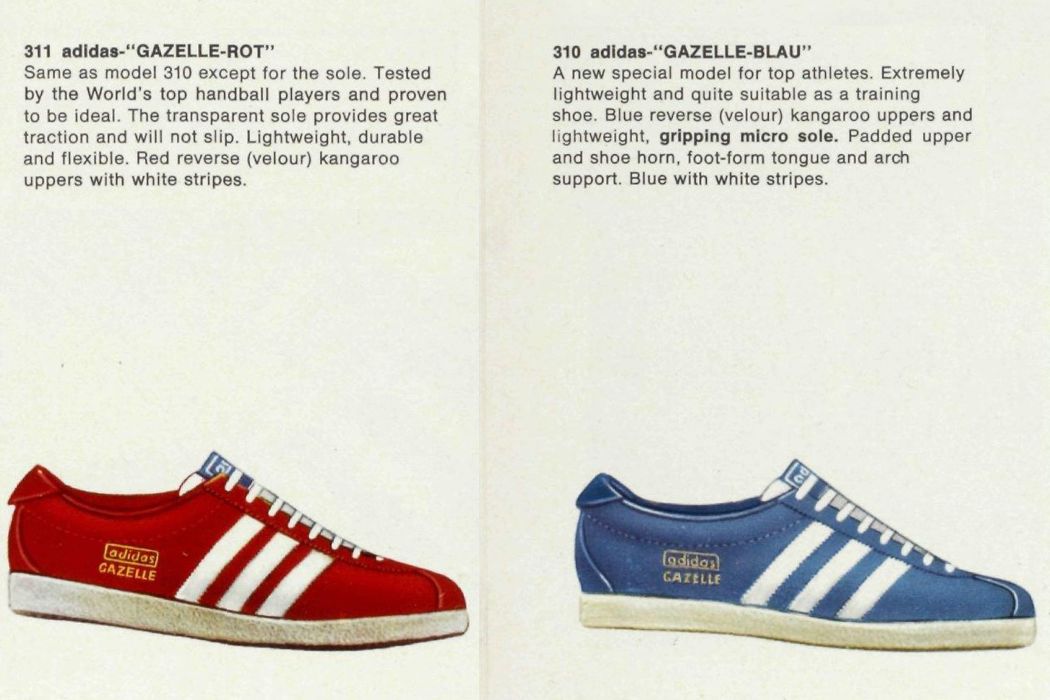
By the 70s the Gazelle was one of the brand's most popular models and adidas experimented with different outsoles along with a number of updated features. This included the ‘Soft Protect’ heel tab which protected the Achilles tendon better and a vinyl foot forming tongue for comfort. The introduction in 1972 of the hexagonal shaped tread microcell sole gave the shoe its most modern outsole and it is this pattern that adidas have used for the new re-issue.
In 1986 adidas inadvertently took their product from sport to street with the help of unlikely collaborators in the form of Hip Hop band, Run DMC. Their spontaneous commercial partnership formed on the back of a popular song featuring adidas in the lyrics. One enduring image is of them at a sold out concert, holding their adidas three-stripes footwear in the air and watching thousands in the crowd respond to the act, a huge advert for the German sportswear brand and of course without any paid or conscious effort to do so, this was a true reflection of the brands popular status.
This reinvigorated the brand and helped them find a fusion between sport and fashion, it was the first venture outside of sport for a brand of their type, nobody had thought to market to these audiences before this time and it is because of this shift that models like the Gazelle were allowed to make the transition in the first place. It fitted perfectly into the specification and conformed to the altering needs of consumers, this era made it acceptable to wear these shoes for everyday activities as well as for sports.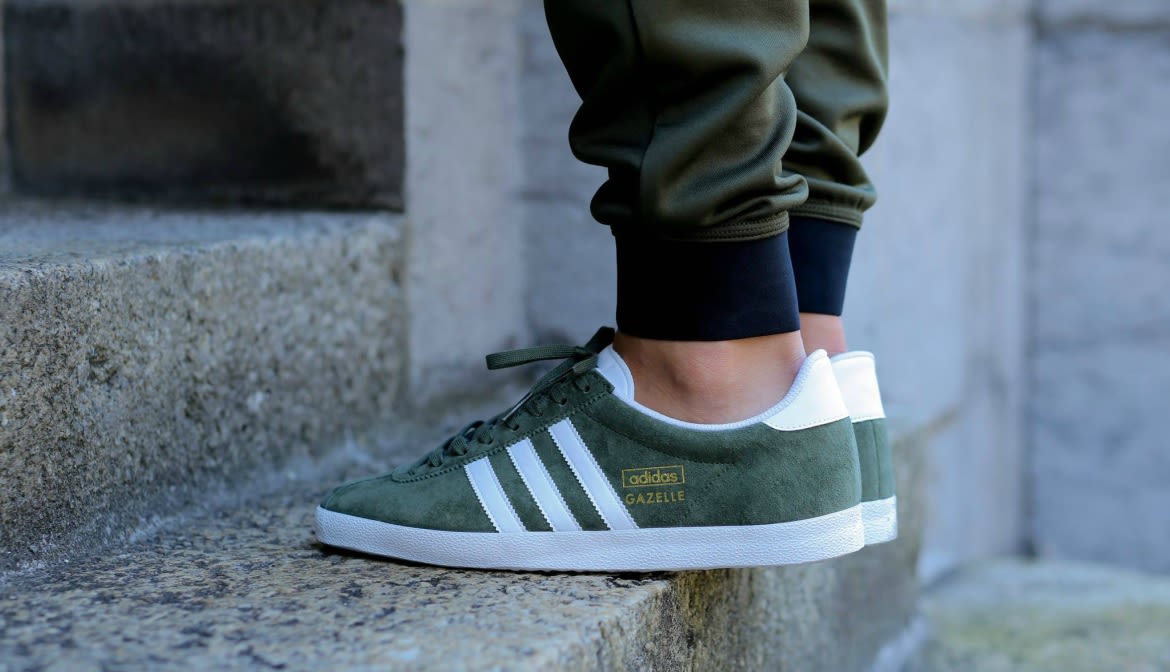
adidas have chosen the 1991 version of the shoe to re-incarnate for 2016 which allows them to dig into their archives to re-issue some of the original colourways of the period, as well as using exact materials of the era including pigskin and the moulded tongue synonymous with this version. Like many of adidas Originals products, simplicity is a key feature of this silhouette and it is certainly one of the qualities which has made it a timeless/retro to date.